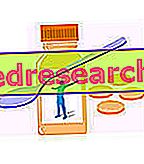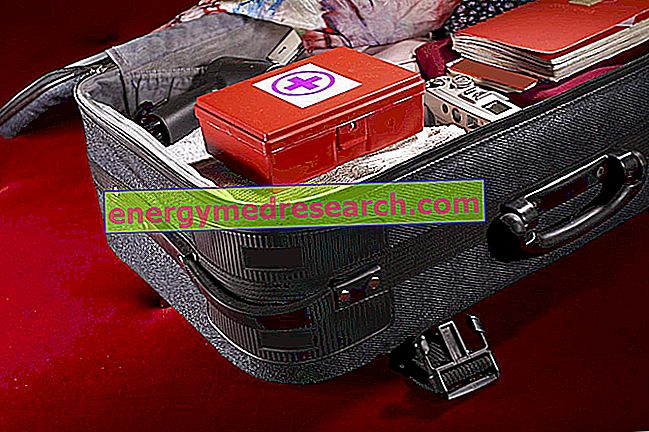Onychomycosis is an infection of the nail supported by some types of fungi.
Throughout life, it affects around 30-50% of people.
Mycosis can affect one or more nails at a time.
It manifests itself with the change of color (yellow, sometimes even green or black), the thickening and / or crumbling of the nails.

The most involved micro-organisms are dermatophytes, but sometimes infection with yeasts or mold is observed.
Onychomycosis most frequently affects the elderly, males, those who dress with narrow, synthetic and non-breathable footwear (rubber boots), those suffering from other localized infections, diabetes, immunosuppression, autoimmune diseases and other skin diseases.
What to do
- Take care of hand and foot hygiene
- Use gloves, socks and breathable shoes
- Loose cotton is suitable; in the feet, it can be worn under comfortable and open footwear (for example sandals) or shoes of natural fabric
- Treating other localized infections:
- The most frequent is athlete's foot or ringworm
- Keep diabetes and complications under control
- Diabetes mellitus hyperglycemia can cause foot microangiopathies and consequent diabetic foot. Even in the early stages, this complication correlates to the onset of onychomycosis
- Increase the attention and care of hygiene in case of:
- Immune suppression for cancer therapies (chemotherapy, etc.)
- AIDS and other immunodepressive diseases
- Eventually, reduce the severity of psoriasis
- Take specific drugs (antifungal enamels) immediately, consulting your pharmacist or doctor
- Only wear clean, unused gloves, socks and shoes
- Stem the infection and prevent the spread of the disease
What NOT to do
- Neglecting hand and foot hygiene
- Use gloves, socks and footwear made of non-breathable fabrics that facilitate sweating and stagnation
- Nilon or synthetic fabrics in general
- Neglecting other localized infections
- Don't compensate for diabetes and suffer from hyperglycemia; this will induce the microangiopathies of the diabetic foot
- Underestimate the lack of efficiency of the immune system
- Neglecting psoriasis
- Do not use drug therapy in a timely manner
- Tear off the sick nail: facilitates bacterial infection on the wound
- Use worn and worn gloves, shoes and shoes
- Ignore the possibility of spreading onychomycosis to third parties
What to eat
There is no diet that can cure or prevent onychomycosis.
On the other hand, certain nutrients are needed to support the immune system; some also have an antioxidant effect and help prevent free radical stress.
- Vitamin C or ascorbic acid: it is contained above all in the acidulous fruit and in the raw vegetables. In particular: peppers, lemon, orange, grapefruit, mandarancio, parsley, kiwi, lettuce, apple, chicory, cabbage, broccoli etc.
- Vitamin D or calciferol: it is mainly contained in: fish, fish oil and egg yolk
- Zinc: it is mainly contained in: liver, meat, milk and derivatives, some bivalve molluscs (especially oysters)
- Selenium: it is mainly contained in: meat, peach products, egg yolk, milk and derivatives, fortified foods (potatoes, etc.)
- Magnesium: it is mainly contained in: oilseeds, cocoa, bran, vegetables and fruits
- Iron: it is mainly contained in: meat, peach and egg yolk
- Polyphenolic antioxidants (simple phenols, flavonoids and tannins): they are mainly contained in: fresh fruit and vegetables, but also red wine, seeds, aromatic herbs, tea, roots, medicinal herbs, etc.
- Lysine and glycine amino acids: they are mainly contained in: meat, fishery products, cheeses and legumes (especially soya)
- Probiotics: they are mainly found in fermented foods such as yogurt, tofu, tempeh, buttermilk etc.
- Omega 3: are mainly contained in: blue fish, some oily seeds and related oils, algae
What NOT to Eat
There are no less recommended products than others. However, it is recommended to avoid:
- Monothematic diets
- Vegan diet
- Diet free of vegetables and vegetables
- Diet based exclusively on cooked and / or preserved foods
Natural Cures and Remedies
Herbal Medicine:
- Immunostimulant plants for oral use (decoctions, extracts, essential oils):
- Echinacea
- Androgafis
- Astragalus
- Eleutherococcus
- Mistletoe
- Uncaria
- Cordyceps
- Aloe gel
- Turmeric
- Antifungal plants for oral use (decoctions, extracts, essential oils):
- Walnut: thanks to the properties of the juglone
- berberine
- Garlic
- goldenseal
- Essential oils for topical use:
- Marjoram
- Melaleuca
- Origan
- thyme
- Cloves
- Savory
- Cinnamon
- Mineralizing plants for oral use:
- Horsetail (juice, capsules)
- Supplements for multi saline nails, containing: sulfur, sodium, potassium, magnesium, iron and calcium.
NB . During the regrowth phase (up to 9 months), generic nail supplements can be useful.
Pharmacological care
Antifungal drugs for topical use (to learn more, read Drugs for the treatment of omnicomosis):
- Enamels and ointments:
- Azole derivatives: ketoconazole eg Ketoconazole EG or miconazole eg Daktarin
- Morpholinic derivatives: amorolfine in enamel for example Locetar
- Allylamines: naftifina for example Suadian, indicated against dermatophytosis
- Ciclopirox: enamel for example Fungizione
- Polienici: nystatin-based creams such as Assocort, Mycostatin
- Tolnaftati: selective against Trichophyton and Epidermophyton
Systemic antifungal drugs for oral use:
- Tablets:
- Azole derivatives:
- Imidazole for example miconazole as Oravig
- Triazole for example itraconazole as Sporanox
- Griseofulvin, for example Fulcin
Prevention
- Keep the nails short, clean and dry
- Try to keep your feet dry by using cotton socks and changing them daily
- Avoid nylon and synthetic stockings in general
- Avoid tight, occlusive, uncomfortable shoes that hinder circulation and are not breathable
- Avoid trauma
- Avoid contact with irritants
- Do not tear the nails that start to get sick but cut them
- Always use slippers (or other protections) in public places such as swimming pools, bathrooms etc.
- Treat as soon as possible other infections, diseases or complications that may favor the onset of onychomycosis
Medical Treatments
- Removal of the infected nail: it is a small surgical procedure that should be used only in the most serious cases



